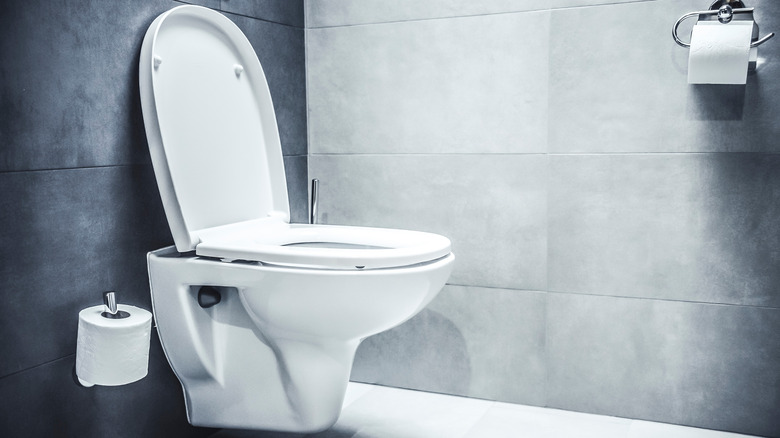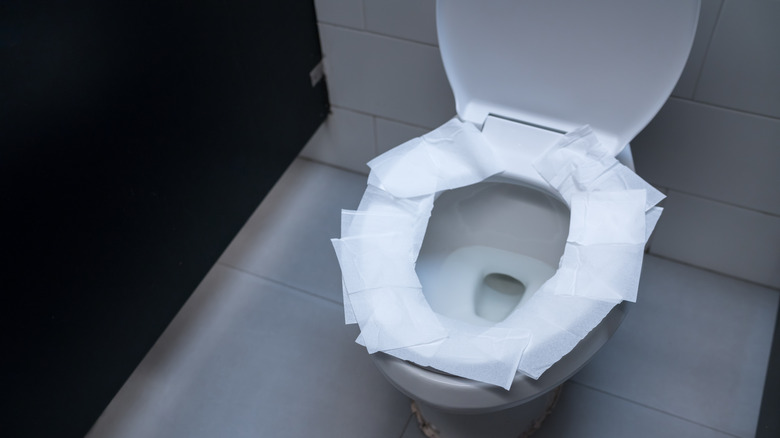Why You Should Think Twice Before Squatting Over A Public Toilet
If you've ever had to pee at a bar or restaurant, chances are that you've come across a few less-than-clean public bathrooms at some point. Depending on the condition of the toilet, you might be tempted to squat over the toilet seat to avoid germs. As it turns out, however, hovering may actually do more than good (via Health). That's because squatting engages your pelvic floors muscles, which is not something you want to happen when you're trying to pee.
"When you don't completely sit down, your muscles are not completely relaxed," Carol Figuers, a professor and director of student affairs in the doctor of physical therapy division at Duke University School of Medicine, told Health. "In order for the bladder to completely empty, the pelvic floor muscles have to be let go."
This means that you'll most likely still have to pee after using the bathroom. Doing this on a regular basis can make you feel like you have to pee more often than you actually do.
Sit down when you pee
That's why it's best to sit down when you pee in public restrooms. According to experts at Well+Good, public toilet seats aren't as dirty as you might think. While the surface of the seat certainly contains germs, sitting down won't cause you to get sick or develop a disease.
"You can go out and swab the toilet seat and see that there are germs on it, but we can do that with almost any part of the environment, including your phone, which you put up to your face," Dr. William Schaffner, an infectious disease specialist and professor at the Vanderbilt University School of Medicine, told Well+Good.
Unlike squatting, sitting down will allow you to fully empty your bladder and avoid any issues with your pelvic floor muscles. But if you're still concerned about germs, there are a few quick and easy solutions. To avoid coming in direct contact with a toilet seat, you can line it with toilet paper or use a disposable toilet seat cover. You can also help kill any germs on the seat by wiping it down with an antibacterial wipe.


